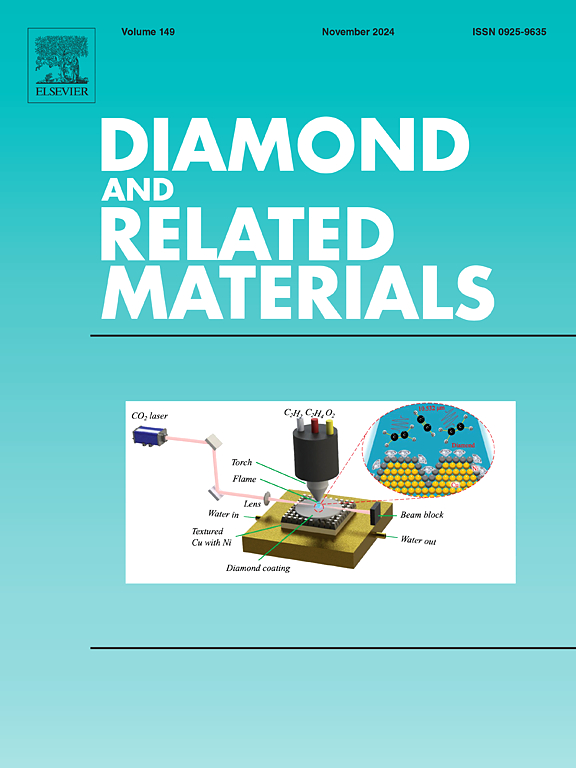Bracts derived activated carbon with ZnCo2O4 composite as electrodes for high-performance asymmetric supercapacitors
IF 4.3
3区 材料科学
Q2 MATERIALS SCIENCE, COATINGS & FILMS
引用次数: 0
Abstract
This research explores the development of an innovative asymmetric supercapacitor (ASC) featuring activated carbon (AC) derived from banana bracts as the negative electrode and a ZnCo2O4/AC nanocomposite as the positive electrode. The honeycomb-like porous structure of the AC enhances its surface area and porosity, facilitating improved ionic mobility. ZnCo2O4 is integrated into the AC framework, providing a mesoporous structure that significantly enhances charge storage and electrical conductivity. The ZnCo2O4/AC composite exhibits a specific capacitance of 1656 F g−1 at 1 A/g, along with impressive rate capability, maintaining 95.3 % of its capacitance after 10,000 cycles. The ASC device operates at a voltage of 1.5 V, delivering an energy density of 42.2 Wh kg−1 and a power density of 750 W kg−1. These results highlight the potential of ZnCo2O4/AC as a high-performance electrode material, combining high capacitance, excellent cycling stability, and superior rate capability for next-generation energy storage applications.

含ZnCo2O4复合材料的苞片衍生活性炭作为高性能非对称超级电容器的电极
本研究探索了一种创新的不对称超级电容器(ASC)的开发,该电容器以来自香蕉片的活性炭(AC)为负极,ZnCo2O4/AC纳米复合材料为正极。蜂窝状多孔结构增强了活性炭的表面积和孔隙率,促进了离子迁移率的提高。ZnCo2O4被集成到交流框架中,提供了一个介孔结构,显着增强了电荷存储和导电性。ZnCo2O4/AC复合材料在1 a /g时的比电容为1656 F g−1,同时具有令人印象深刻的倍率能力,在10,000次循环后保持95.3%的电容。ASC器件工作电压为1.5 V,能量密度为42.2 Wh kg−1,功率密度为750w kg−1。这些结果突出了ZnCo2O4/AC作为高性能电极材料的潜力,它结合了高电容、优异的循环稳定性和卓越的速率能力,可用于下一代储能应用。
本文章由计算机程序翻译,如有差异,请以英文原文为准。
求助全文
约1分钟内获得全文
求助全文
来源期刊

Diamond and Related Materials
工程技术-材料科学:综合
CiteScore
6.00
自引率
14.60%
发文量
702
审稿时长
2.1 months
期刊介绍:
DRM is a leading international journal that publishes new fundamental and applied research on all forms of diamond, the integration of diamond with other advanced materials and development of technologies exploiting diamond. The synthesis, characterization and processing of single crystal diamond, polycrystalline films, nanodiamond powders and heterostructures with other advanced materials are encouraged topics for technical and review articles. In addition to diamond, the journal publishes manuscripts on the synthesis, characterization and application of other related materials including diamond-like carbons, carbon nanotubes, graphene, and boron and carbon nitrides. Articles are sought on the chemical functionalization of diamond and related materials as well as their use in electrochemistry, energy storage and conversion, chemical and biological sensing, imaging, thermal management, photonic and quantum applications, electron emission and electronic devices.
The International Conference on Diamond and Carbon Materials has evolved into the largest and most well attended forum in the field of diamond, providing a forum to showcase the latest results in the science and technology of diamond and other carbon materials such as carbon nanotubes, graphene, and diamond-like carbon. Run annually in association with Diamond and Related Materials the conference provides junior and established researchers the opportunity to exchange the latest results ranging from fundamental physical and chemical concepts to applied research focusing on the next generation carbon-based devices.
 求助内容:
求助内容: 应助结果提醒方式:
应助结果提醒方式:


